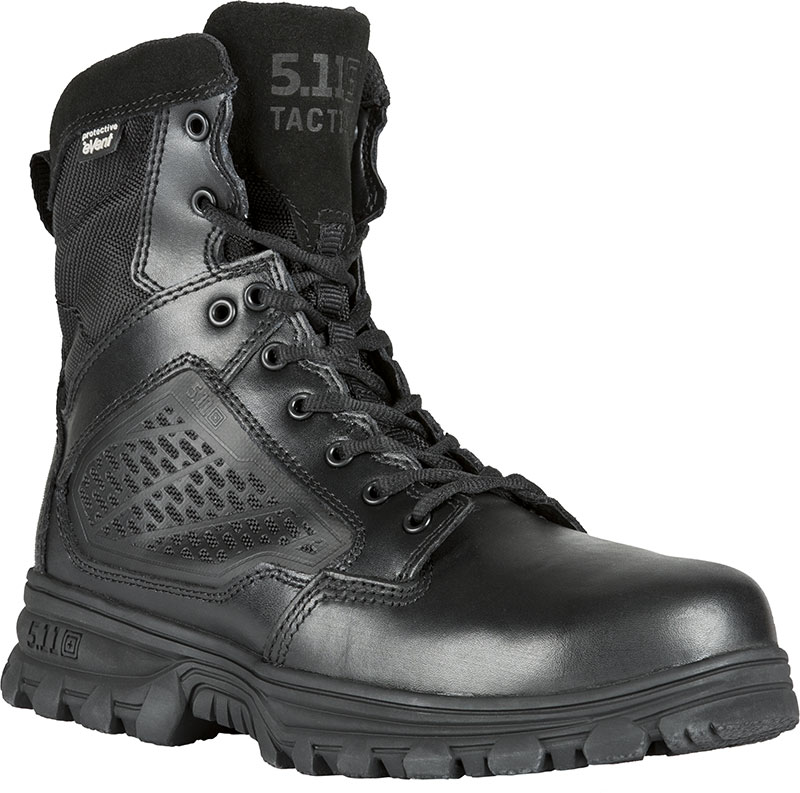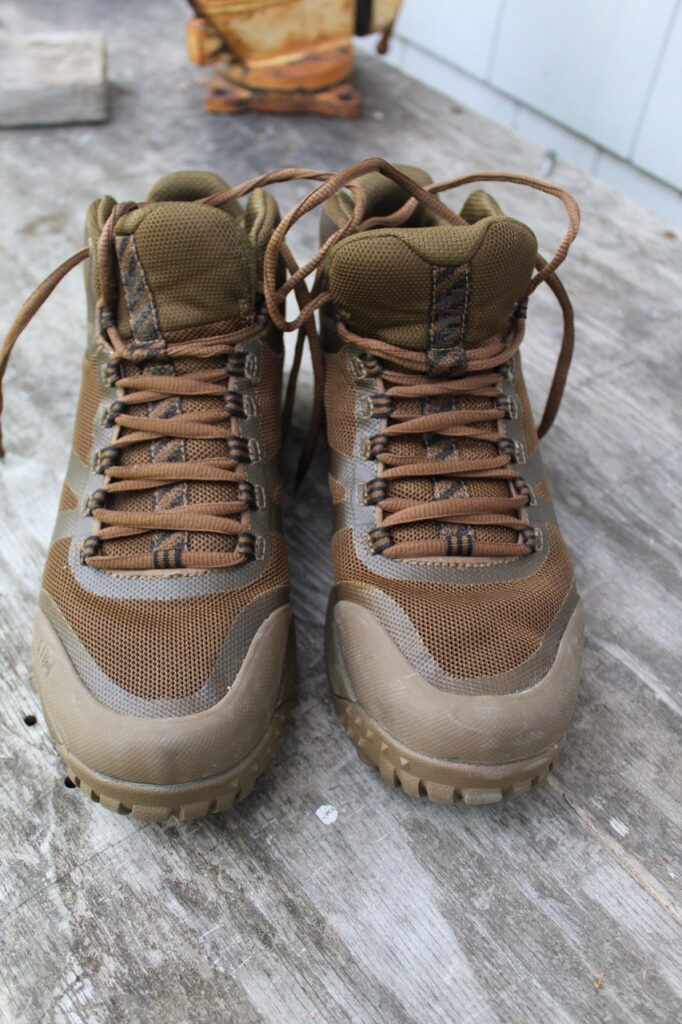By Dana Benner
We all have “stuff”. We have the latest packs, knives and firearms; you name it, we have it. Honestly, none of that gear will do you any good if you can’t walk from Point A to Point B. This article is all about taking care of your feet.
I remember vividly being on a forced march during basic training and wondering why I was doing this. After all my final MOS said I was going to be part of a mechanized unit (it didn’t turn out that way, but that is a different story). We carried rucksacks full of stuff that we all knew we would never need or use (we were 17 years old, so we knew everything), flak jackets with steel plates (no Kevlar then) and we wore steel pots (again, no Kevlar helmets). Supporting all of this weight were our feet. The only thing between us and certain disaster were a pair of olive green Army issued wool socks and a pair of leather combat boots that really never fit right.
Another thing I remember are the actions Drill Sgt. Thompson took during those marches.. At every stop he had us all take off our boots and check our feet, and change socks (some of those “not needed” items in our packs) as needed. We checked mainly for blisters, which were common and had to be taken care of before they became bigger issues. He taught us valuable lessons, not the least of which was the need to take care of our feet.
So where does this trip down memory lane take us? It proves the point that despite our mechanized world, if something was to happen, we will need to rely upon our feet. The Army’s theory was if your vehicle goes down, then you will be infantry. The same thing could happen in the outside world as well. That means taking care of your feet.
Socks:
Why do I start with socks? Because they are what is against the skin of your feet. Ill-fitting socks, like ill-fitting boots, will cause blisters. Socks also control how warm, or cold, your feet will be. Poorly fitting socks will cut off blood circulation to your feet, making them cold. The wrong socks can make your feet overheat, causing them to sweat. The moisture can become trapped in your socks, which can lead to a host of problems.
When I purchase socks I look for socks that are of a wool blend. Wool is perfect for warmth and for wicking away moisture, caused by sweat, from your feet. On the same token, wet socks are wet socks and wool can get wet. The key is to change your socks when they do get wet. The socks I wear come from three main sources; Darn Tough Socks, 5.11 Tactical and SmartWool.
Boots and shoes:
When purchasing footwear you need to first decide what you intend to do. If you are a kayaker, rafter or canoer then you want a shoe with good grip (for when you have to portage), but also will shed water and dry quickly. Hikers need boots that give both ankle and arch support. They also need boots that “breathe”, meaning that they expel excess heat and moisture, thus helping to avoid blisters and foot fungus (trench foot, athlete’s foot, etc). I could go on, but you get the idea.
Proper fit is extremely important. You may take a size 9, but not all size 9s are the same. With much of the footwear available being made overseas, sometimes it can be a crap shoot regarding size. Many of the top name makers mark the sizes right on the inside of the tongue. Make sure you check to make sure it is a US size 9 (or whatever size you take).
Most shoes and boots feel great right out of the box. It isn’t until you get them home and wear them a little that you end up finding that they don’t feel right. Perhaps there is a seam rubbing on the side of your foot, or the arch support is not enough. Now is the time to find out these things. Out in the boonies is no place for foot issues.
Upgrade Your Laces
I don’t immediately replace the laces that come with the footwear. Instead I usually buy a couple pair of upgraded laces, knowing full well that they will be needed. I keep at least one pair of the new laces in my pack, just in case.
Most laces today are made of lacing cord with a cheap nylon or other synthetic sheath. This is not high end stuff and once the sheath goes, the laces are basically shot. My replacement laces are either the old style leather boot laces or paracord laces. Both are more expensive than most replacement laces, but they are almost impossible to break. In the case of paracord laces, you can always make your own. There is always a coil of paracord in my pack, as you just never know.
What I Wear:
- Kayaking, rafting and canoeing:
When you do any water related activity your feet are bound to get wet. While the water may feel good at the moment, especially on a 90 degree plus summer day, excess water on your feet can have very bad consequences. Just look at your feet when you come out of the shower. The skin is soft and pliable. Now imagine having to walk a few miles over rough terrain with your feet like that.
For that reason it is very important that the shoes you wear for kayaking, canoeing and rafting are made to let the water out and allow air to circulate. They also need to dry quickly and have a good, tough sole. There are many good “water shoes” out there that are made just this way. I happen to like the ones put out by Chaco. Whatever brand you get, make sure that they are shoes. Stay away from sandals, flip-flops, shoe/flip-flop hybrids and sneakers. All of these will do more harm than good.
- Hunting:
In my neck of the woods, with few exceptions, hunting begins in October and runs through the end of the year. From September on we could see snow, freezing rain and cold temperatures at any time. We also can have a few days of 70 degree weather, so you need to be prepared for just about anything.
All of my hunting boots go up to mid-calf and have lugged soles. I like the higher books as they give me more ankle support. Due to the ever changing weather conditions, I have three pairs of boots designated just for hunting: heavy, well insulated boots for traveling in deep snow, a lighter, yet still insulated pair for normal times and a pair that aren’t insulated for those warm days. When hunting we all worry about our feet getting cold, but we also have to be concerned about them getting too hot. Pick the right boot for the situation.
- Hiking:
While hunting is often made up of short bursts of walking and a whole lot of sitting (unless you are upland hunting), with hiking you are constantly moving. Your boot needs to live up to the task. I like boots that come up just above the ankle. They are lighter, but give ample support where you need it. My hiking boots don’t have solid leather uppers; instead they are either all synthetic or a mix of leather and synthetic. The synthetic material not only cuts down on the weight, but it also allows the boot to be designed to breathe, thus helping to eliminate moisture. Trapped moisture equals blisters and blisters equal problems.
- Around Camp:
When I am back to camp, wherever that may be, one of the first things I do is change out of the boots that I have been wearing all day. I dry my feet and put on a pair of lightweight athletic shoes. These give my feet a chance to relax and breathe. Make sure to allow your boots to air out and dry. Putting them on the end of a couple poles or sticks works well.
Conclusion:
Any situation can quickly turn into a survival situation, so for that reason it is very important to have everything in working order; including your feet. Being able to walk out of a bad spot could mean the difference between life and death, so take care of your feet. Having the proper footwear is just one way of making that happen.






